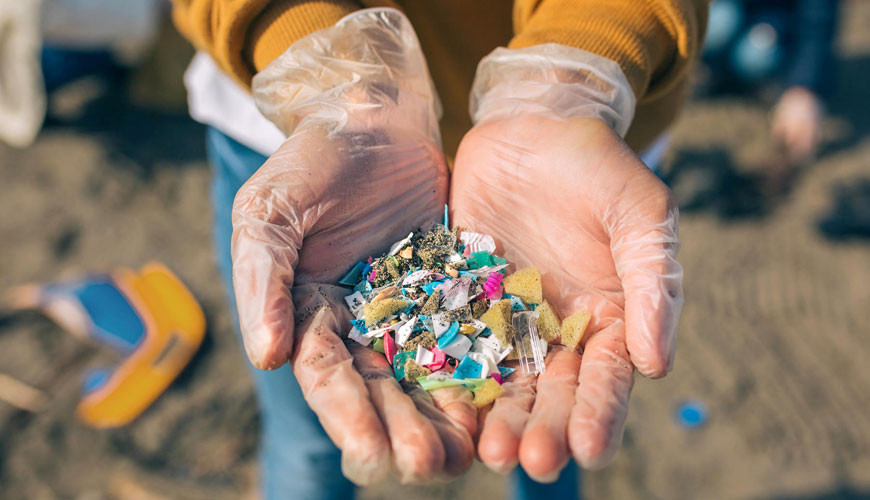

Microplastics are small plastic particles that result from both commercial product development and the breakdown of larger plastics. As a pollutant, microplastics are harmful to the environment and animal health. Microplastics are formally defined as plastics less than five millimeters in diameter.

There are two categories of microplastics: primary and secondary. Primary microplastics are small particles intended for commercial use, such as cosmetics, as well as microfibers shed from other textiles such as clothing and fishing nets. Secondary microplastics are particles that result from the breakdown of larger plastic parts, such as water bottles. This degradation is caused by exposure to environmental factors, primarily solar radiation and ocean waves.
But the main problem with microplastics is that they don't easily break down into harmless molecules. It takes thousands of years for plastics to decompose in nature and harms the environment during this time. In the oceans, microplastic pollution is often consumed by marine animals and these creatures suffer greatly.
Some of this environmental pollution is caused by garbage. Strong winds and water runoff carry pristine objects and microplastics into the great seas. Single-use plastics are the main secondary plastics in the environment.
Microplastics have been detected in marine organisms, from plankton to whales, in seafood and even in drinking water. Standard water treatment plants cannot remove all traces of microplastics. In addition, marine microplastics bind with other harmful chemicals before being swallowed by marine organisms.
Today, many countries are taking action to reduce microplastics in the environment. The United Nations discusses microplastics and the need for legislation to reduce this danger to oceans, wildlife and human health.
Some of the plastics, which occupy a large place in daily life, are recycled. But more than 40 percent of plastic is used only once and remains in the environment for a very long time before it is thrown into the environment.
Microplastics enter the human body through ingestion and inhalation, accumulate in various organs and affect the body's immune system by damaging cells.
Combinations of physical (eg microscopy) and chemical (eg spectroscopy) analyzes are widely used today in microplastic analysis. However, new methods are being studied to reduce identification time and effort and to detect submicron plastics in environmental samples.
Our organization also provides microplastic analysis services with its trained and expert staff and advanced technological equipment, among the numerous test, measurement, analysis and evaluation studies it provides for businesses in various sectors.
To get an appointment, to get more detailed information or to request an evaluation, you can ask us to fill in our form and reach you.